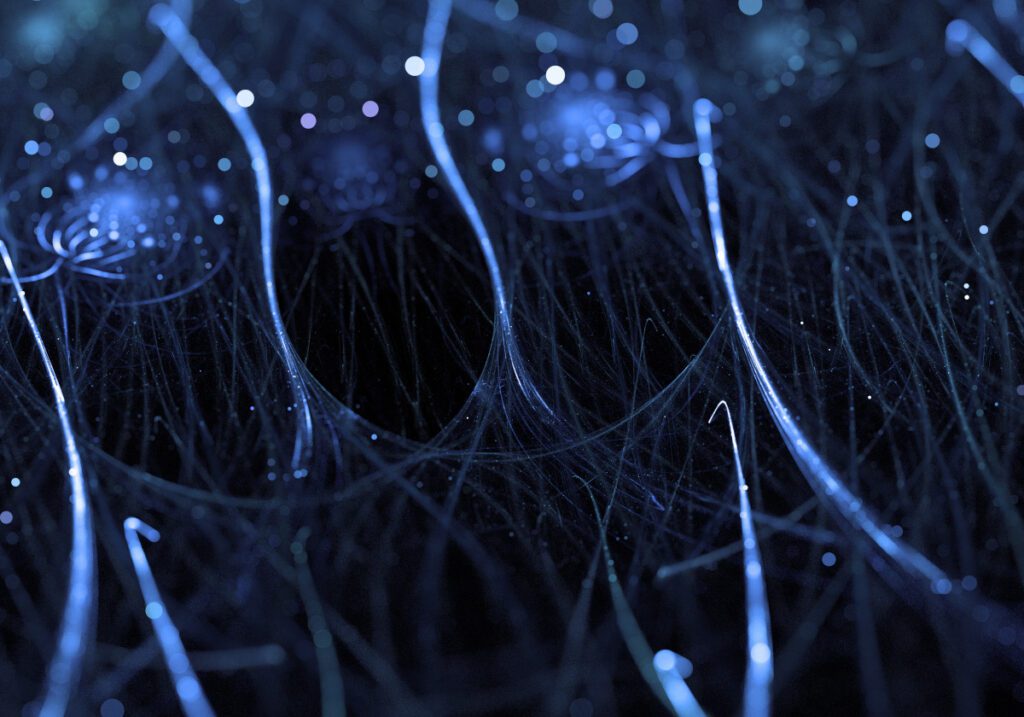A recent IBEC study has described how cells contact guidance is not only topography-dependent but also affected by the stiffness of the environment. The work highlights the importance of considering the stiffness of the substrate as another variable when studying and understanding in depth the process of cell migration inside the organism. This information is crucial to comprehend multiple physiological and pathological processes associated with cell migration.

It is well known that cells can detect chemical, mechanical, or even topography signals from their environment to orient themselves. When cell migration is driven by topography the process is called contact guidance and it can be determined by the presence of grooves, ridges, or other surface patterns.
A recent study by the IBEC’s research group of Biomimetic Systems for Cell Engineering, led by Elena Martínez, has described how the contact guidance of cells is also affected by the stiffness of the environment. The work, recently published in the scientific journal Materials Today Bio, highlights the importance of considering the stiffness of the substrate as another variable when studying the effects of topography on the behavior of cells. This information is crucial to comprehend multiple physiological and pathological processes associated with cell migration, such as embryonic development, the immune response, or the spread of tumors during metastasis.
“The cells are oriented through aligned protein fibers that work as rails, making cells move in a specific direction as if they were train tracks.”
Elena Martínez
“The cells are oriented through aligned protein fibers that work as rails, making cells move in a specific direction as if they were train tracks. Using this type of microstructured substrates, we can simulate these rails used by cells to migrate in many physiological and pathological processes.” Explains Elena Martínez, principal investigator at IBEC and professor at the Universitat de Barcelona.
The researchers compared the behavior of two breast cancer cell lines. One is considered metastatic – that is, it migrates – and the other is not. In the case of substrates with high stiffness, they observed that both cell types barely migrated. However, when using substrates with a lower stiffness, similar to that of body tissues, the behavior of the cells changed.
“We have seen that when we put cells on softer substrates, with a stiffness similar to that of healthy tissue, they don’t migrate. However, when we increase to an intermediate stiffness, equivalent to that of a pathological tissue such as the one found in tumors, cells begin to migrate much more efficiently, even those considered non-metastatic.” details Jordi Comelles, IBEC researcher and first author of the article.
When we put cells on substrates with a stiffness equivalent to that of a pathological tissue such as the one found in tumors, cells begin to migrate much more efficiently, even those considered non-metastatic.”
Jordi Comelles
Most of the studies on contact guidance had been carried out using materials much stiffer than the tissues found in the body. This limitation was due to the lack of microfabrication methods that would allow the creation of topographic patterns in soft materials with a stiffness similar to that of organic tissues. However, Martinez’s group was able to produce a pattern of micrometric grooves on a soft substrate – a polymeric gel – using an advanced microfabrication method developed by the same research team.
Reference article:
Jordi Comelles, Vanesa Fernández-Majada, Verónica Acevedo, Beatriz Rebollo-Calderon y Elena Martínez. Soft topographical patterns trigger a stiffness-dependent cellular response to contact guidance. Materials Today Bio (2023). DOI: 10.1016/j.mtbio.2023.100593





